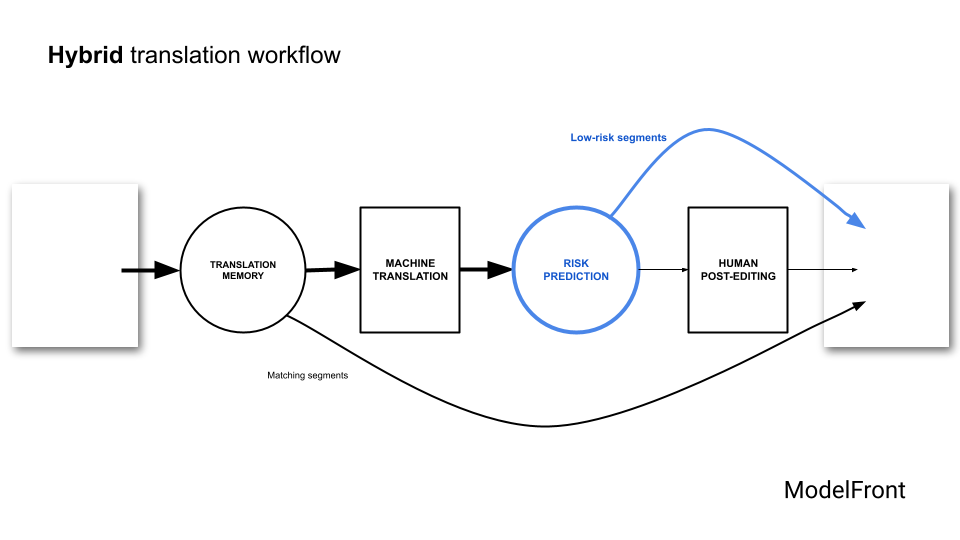Hybrid translation
Workflow with both human translations and pure machine translations
In a hybrid translation workflow, some raw machine translations are never seen or edited by a human translator.
Hybrid translation can be faster and cheaper than full human post-editing.
Hybrid translation requires good machine translation. A signification portion of the machine translated segments should be usable as-is.
Workflow diagram
The hybrid translation workflow was first presented by Microsoft, VMWare and Unbabel.
Slide from a ModelFront presentation
A risk threshold is set. Each new machine translation is automatically classified as high-quality or low-quality.
A high-quality machine translation is used as-is and skips human post-editing.
A low-quality translation is still sent to a human translator for post-editing.
In the translation management system (TMS) and computer-aided translation (CAT) tool, the high-quality machine translations are handled like exact matches from the translation memory. They are marked as translated or approved, and potentially even locked.
Technology
The key technology for a hybrid translation workflow is translation quality prediction, which is known as machine translation quality estimation in the research world.
Adoption
At first, companies like Microsoft, Unbabel, VMWare and Wayfair implemented hybrid translation by researching and developing their own machine translation quality estimation.
With the launch of the ModelFront translation quality prediction API, more companies started to adopt the hybrid translation workflow within commercially available translation management systems.
